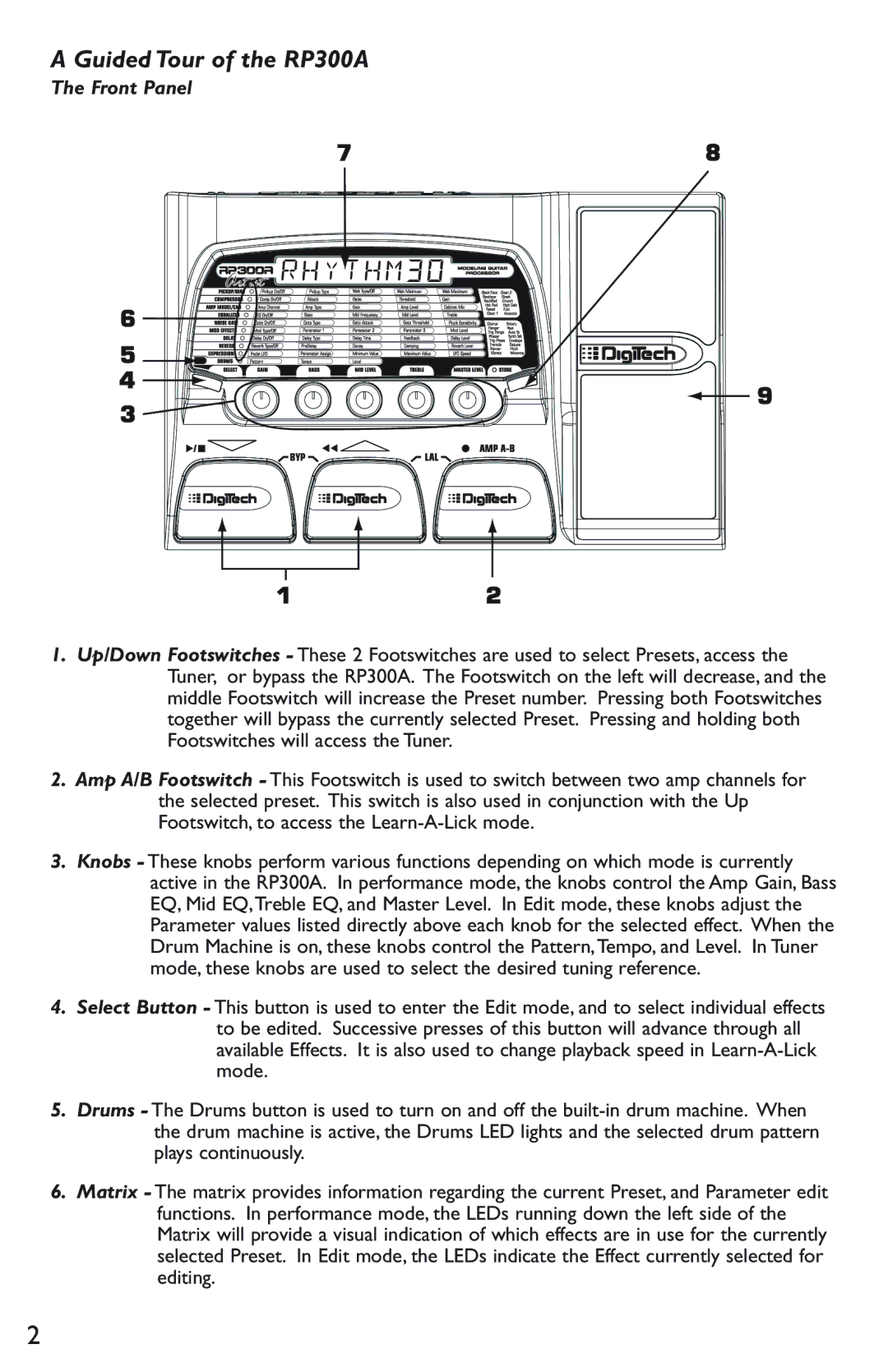
A Guided Tour of the RP300A
The Front Panel




 RHYTHM30
RHYTHM30 











1.Up/Down Footswitches - These 2 Footswitches are used to select Presets, access the Tuner, or bypass the RP300A. The Footswitch on the left will decrease, and the middle Footswitch will increase the Preset number. Pressing both Footswitches together will bypass the currently selected Preset. Pressing and holding both Footswitches will access the Tuner.
2.Amp A/B Footswitch - This Footswitch is used to switch between two amp channels for the selected preset. This switch is also used in conjunction with the Up Footswitch, to access the
3.Knobs - These knobs perform various functions depending on which mode is currently active in the RP300A. In performance mode, the knobs control the Amp Gain, Bass EQ, Mid EQ,Treble EQ, and Master Level. In Edit mode, these knobs adjust the Parameter values listed directly above each knob for the selected effect. When the Drum Machine is on, these knobs control the Pattern,Tempo, and Level. In Tuner mode, these knobs are used to select the desired tuning reference.
4.Select Button - This button is used to enter the Edit mode, and to select individual effects to be edited. Successive presses of this button will advance through all available Effects. It is also used to change playback speed in
5.Drums - The Drums button is used to turn on and off the
6.Matrix - The matrix provides information regarding the current Preset, and Parameter edit functions. In performance mode, the LEDs running down the left side of the Matrix will provide a visual indication of which effects are in use for the currently selected Preset. In Edit mode, the LEDs indicate the Effect currently selected for editing.
2
